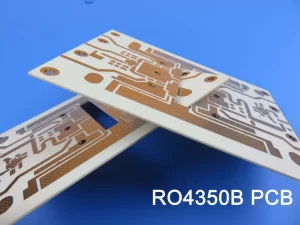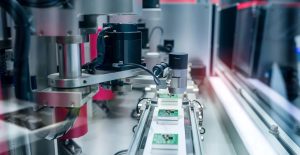目录
ToggleOptimizing Signal Integrity in High-Speed Multi-layer PCBs
Introduction to Signal Integrity in Multi-layer PCBs
Optimizing signal integrity in multi-layer PCBs is crucial for ensuring high-speed data transfer and reliable performance in modern electronic devices. As data rates continue to increase, maintaining signal quality becomes a significant challenge due to factors like signal loss, crosstalk, and electromagnetic interference. Effective strategies and techniques must be implemented to mitigate these issues and ensure that signals remain clear and precise over long distances and multiple layers.

The Importance of Controlled Impedance
Controlled impedance is a critical factor in maintaining signal integrity in multi-layer PCBs. Variations in impedance can lead to signal reflections and distortions, degrading the overall signal quality. By carefully designing trace widths and spacing, and selecting appropriate dielectric materials, engineers can achieve consistent impedance levels throughout the PCB. This consistency helps to minimize signal loss and maintain the integrity of high-speed signals.

Differential Pair Routing for High-Speed Signals
Differential pair routing is another essential technique for optimizing signal integrity. This method involves routing two complementary signals together, which helps to cancel out noise and reduce electromagnetic interference. The paired signals should have matched lengths to ensure synchronized transmission, preventing skew and maintaining signal quality. Differential pair routing is especially beneficial for high-speed data transfer applications, where signal integrity is paramount.

Utilizing Signal Integrity Simulation Tools
Simulation tools play a vital role in the design process, allowing engineers to model and analyze the behavior of high-speed signals within a multi-layer PCB. Tools like HyperLynx, ADS, and SiSoft can simulate various scenarios, helping to identify potential issues and optimize the PCB layout before fabrication. These simulations can reveal critical insights into impedance mismatches, crosstalk, and signal reflections, enabling engineers to make informed design decisions.

Thermal Management Considerations
Thermal management is another crucial aspect of maintaining signal integrity in multi-layer PCBs. Excessive heat can cause signal degradation and impact the performance of high-speed circuits. Implementing thermal vias, heat sinks, and proper component placement can help dissipate heat effectively. Additionally, selecting materials with good thermal conductivity can improve overall thermal performance and contribute to maintaining signal integrity.
Case Study: Practical Application of Signal Integrity Techniques
In a recent project, a multi-layer PCB was designed for a high-speed data transfer application. The design included controlled impedance traces, differential pair routing, and thorough signal integrity simulations. The implementation of thermal management strategies, such as thermal vias and strategic component placement, ensured that the PCB operated within optimal temperature ranges. The result was a robust and reliable PCB design that maintained excellent signal integrity even at high data rates.
Technique |
Description |
Impact on Signal Integrity |
|---|---|---|
|
Controlled Impedance |
Ensures consistent impedance levels throughout the PCB |
Reduces signal loss and reflections |
|
Differential Pair Routing |
Routes complementary signals together to cancel out noise and reduce interference |
Enhances signal quality and reduces EMI |
|
Signal Integrity Simulation |
Models and analyzes signal behavior to identify and mitigate issues |
Optimizes PCB layout for high-speed signals |
|
Thermal Management |
Implements strategies to dissipate heat effectively |
Prevents signal degradation due to overheating |
Conclusion
Optimizing signal integrity in multi-layer PCBs for high-speed data transfer involves a combination of advanced techniques, including controlled impedance, differential pair routing, and thorough signal integrity simulations. Effective thermal management also plays a crucial role in maintaining signal quality. By implementing these strategies, engineers can design PCBs that deliver reliable performance and meet the demands of modern high-speed applications.






